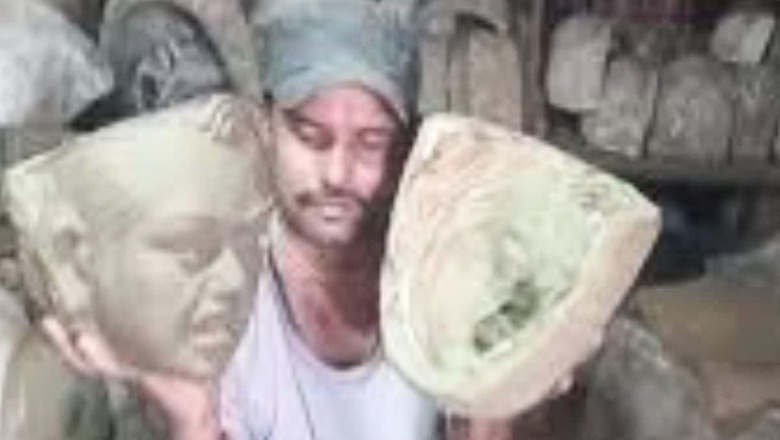
views
The countdown for Durga Puja has started in India. This annual festival is celebrated for 10 days with the last five days considered to be important by the Hindu devotees. During Durga Puja, Hindu devotees pay homage to the Hindu goddess Durga; she is celebrated because of her victory against Mahishasura. The puja is performed in homes and in public. The festival is marked by scripture recitations, performance arts, gifts, Durga idols, family visits and processions. The idols of the gods and goddesses are shaped by the potters. The Ganga river’s mud is used to make the faces of the idols in West Bengal. Making the faces of Goddess Durga while constructing an idol is not a simple feat to achieve. Potters have been using different moulds to make faces for a long time. The face of the idol is made of two layers of clay. The first layer contains only Ganga river’s soil due to its smoothness. The second layer consists of a special hard clay made up of Ganga clay, rice bran and jute powder to harden the face.
After the first layer is placed in the mould, the second layer of clay is imposed on it. The face of the idol is sculpted through the potter’s hand techniques. Then they are dried in the sun and placed on the idol. In rare cases, the faces of the Goddess Durga idol are not always made of moulds. If the idol is big, the potter has to make it with his own hands.
Jai Kali Pottery is located in Nutandihi of Jhargram city in West Bengal. Potter Sanjeev Das has been making idols for 27 years. He said, “Idols have been made for a long time. To make the face of the idol, first, we make a mould with plaster of Paris. Then with that mould, we make the face of the idol. Many times, if the idol is big, then you have to make the face with your own hands. Especially the face of Ganesha has to be made by hand.”



















Comments
0 comment